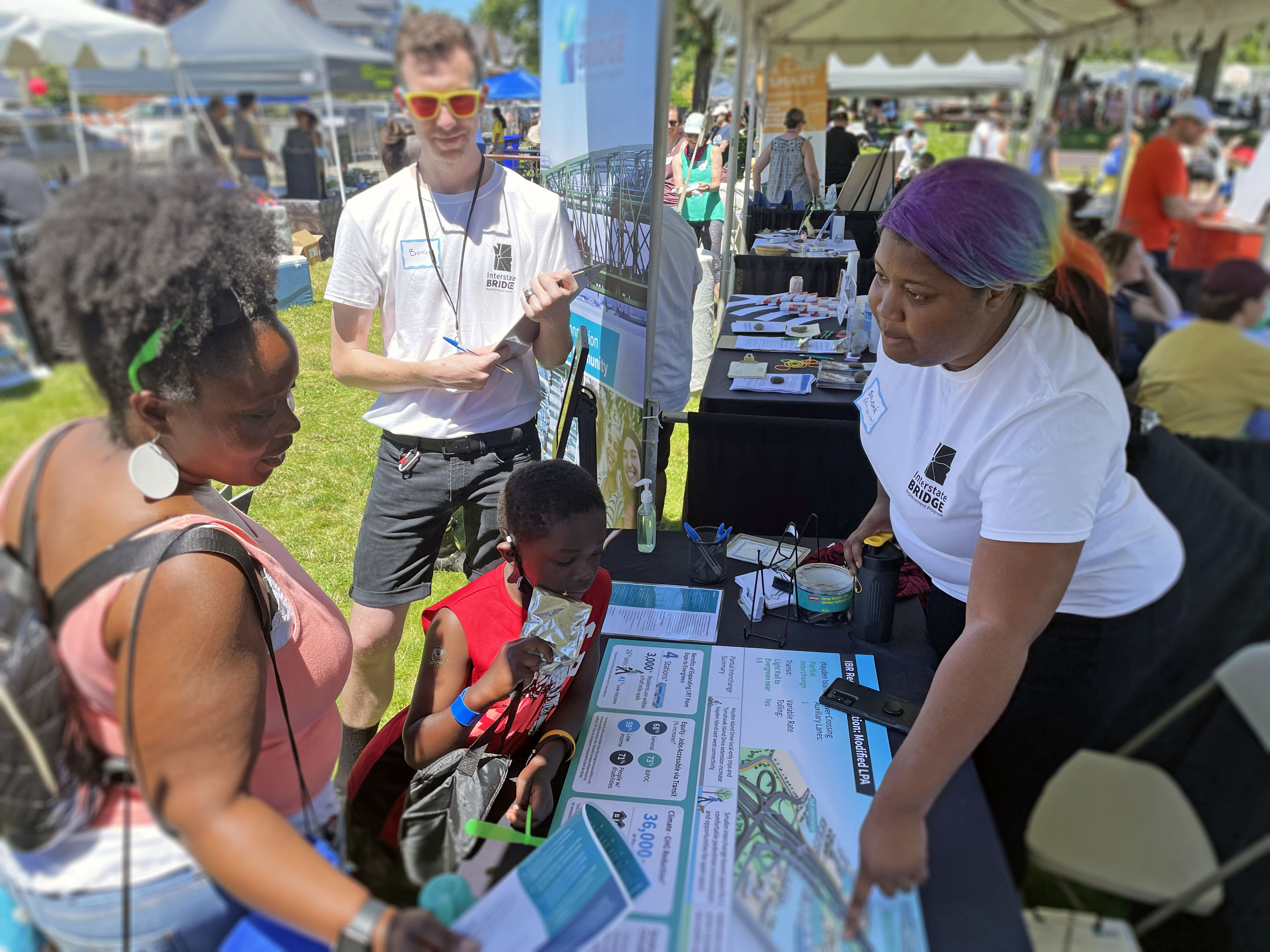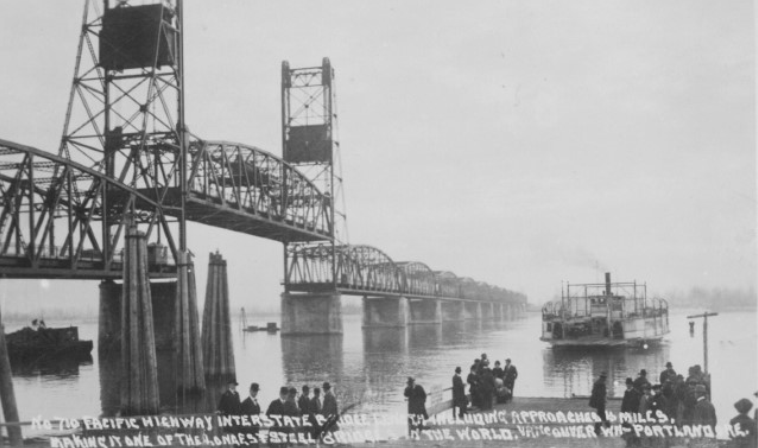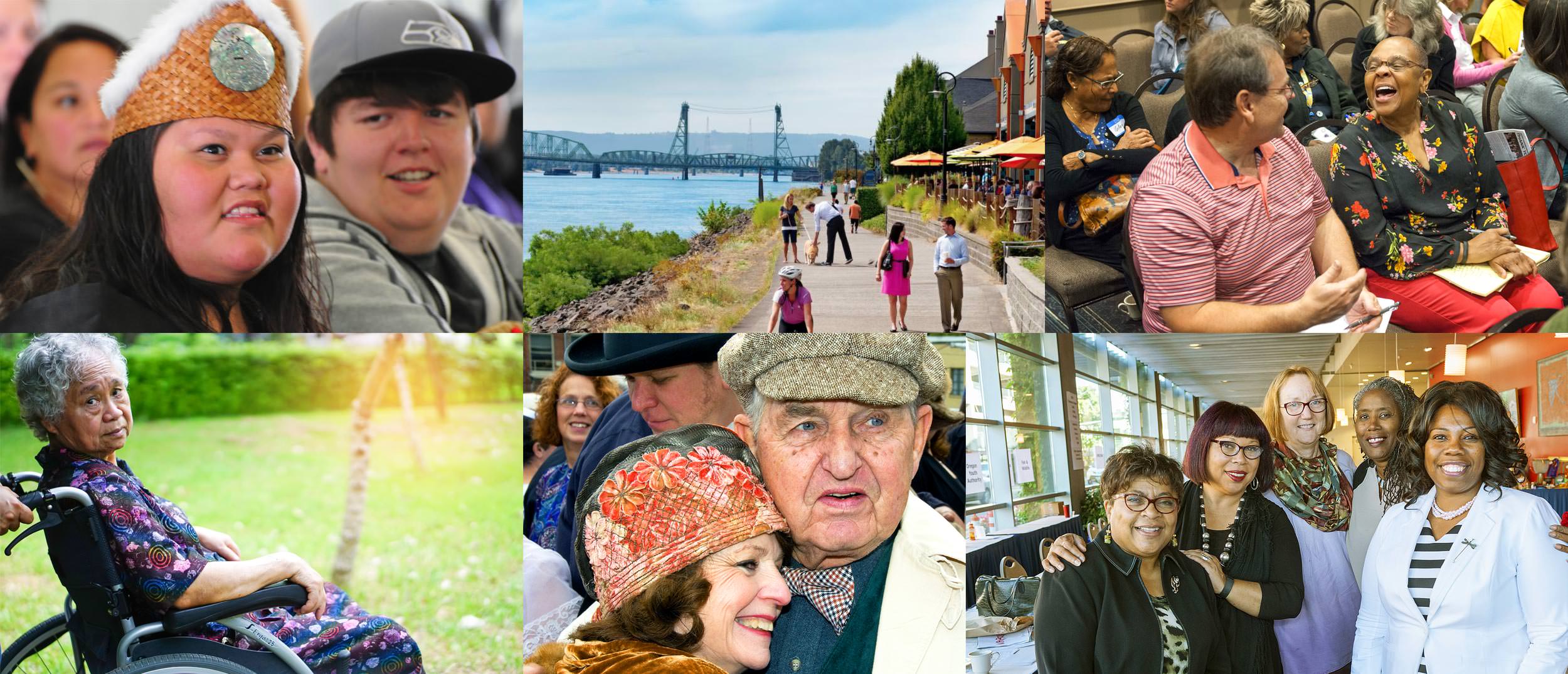Our Equity Commitment
Centering equity
The Interstate Bridge Replacement (IBR) program is committed to centering equity in our processes and our outcomes. We are engaging the community by elevating the voices of equity priority communities throughout our processes and ensuring these communities can access the program’s economic and transportation benefits. We commit to not furthering continued harm to these communities.
View our factsheet and see what we've been up to!

Picture of IBR reaching out to the community during the Good in the Hood Festival.
"Within our region, 'equity' is defined in myriad ways. For the IBR program to honor its commitment to center equity it must clearly articulate to the community what this commitment means, beginning by establishing a program-specific definition of equity." -- Dr. Roberta Hunte, EAG Facilitator
Definition of equity
Together, Process Equity and Outcome Equity contribute to addressing the impacts of and removing long-standing injustices experienced by these communities.
Process Equity means that the program prioritizes access, influence and decision-making power for marginalized and underserved communities throughout the program in establishing objectives, design, implementation and evaluation of success.
Outcome Equity is the result of successful Process Equity and is demonstrated by tangible transportation and economic benefits for equity priority communities.
Our commitment
We commit to acknowledging the difficult past some major projects in our region have had on communities of color, and to learning from this troubled history to pave the way for a more inclusive project that intentionally engages equity priority communities in decision-making. We commit to building our own capacity and understanding of Diversity, Equity and Inclusion (DEI) and to learning directly from our diverse communities, their lived experiences and stories.

Area history
As the bridge connects Oregon and Washington, it also connects us to so much more. It connects us to our communities, their history and their experiences. Modernization has long been a source of harm to communities that have been displaced as a result of modernization and the infrastructure that supports it. We must ensure that these equity priority communities have an equal opportunity for participation and benefit from the investment of this project. To ensure inclusivity and equity as the program moves forward, the current landscape and its history must be understood.
This history, including many individuals and families who were directly affected by pivotal events, includes (but is not limited to) the following:
- Chinook villages on the shores of the lower Columbia River thrived for centuries until the 19th century, when settlers brought disease and ultimately removed Indigenous peoples to the Grand Ronde and Yakama Reservations More »
- The history of Indigenous peoples on the land where Fort Vancouver now sits; subsequent establishment of the fort, and the role that Asian immigrants, Hawaiians, and African American soldiers played throughout its history
- Oregon’s Constitution, which prohibited Black people from entering or residing in the state, and was later updated to exclude Chinese Americans from basic rights, including property ownership and voting
- African American and Native American workers at the Kaiser Shipyards in Portland and Vancouver during World War II More »
- The flooding of Vanport, resulting in the displacement of thousands of families who were housed there (many of whom were Black) More »
- Construction of I-5, the Memorial Coliseum, and the Emanuel Hospital expansion that collectively displaced thousands of Black Portlanders from the 1950s through the 1970s More »
- Redlining and other housing discrimination experienced by communities of color
- Historical and ongoing gentrification and displacement in Portland and Vancouver More »
The historical significance of uniting communities on both sides of the Columbia River still resonates today. Program development will center on equity and follow a transparent, data-driven process that includes collaboration with local, state, federal and tribal partners.
Our communities
Our primary goal is to connect with members of the community as people first. That means understanding individual needs, whether they are someone riding a bus or bike across the bridge, reliant on wheelchair access, transporting freight from one of our ports or commuting to work.
Our engagement efforts must be as diverse as our communities.
To support that effort, we have developed an Equity Advisory Group (EAG) and a Community Advisory Group (CAG). The EAG helps ensure that the IBR program remains centered on equity, as outlined in the Equity Framework. The group makes recommendations to the program regarding processes, policies and decisions that have the potential to affect equity priority communities. The CAG provides input and feedback reflective of the community’s needs, issues and priorities to influence the outcomes of the IBR program.
We must ensure all communities have an equal opportunity for participation and benefit from the investment of this program. Engagement with equity priority communities is core to the program’s success, and we look forward to continuing that work. We are committed to delivering a solution that meets the needs of everyone, for generations to come.

photo collage of communities
